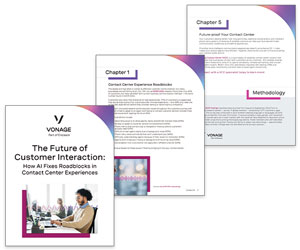Future forecasting models
Dave Appleby explores the future of Erlang as a method for workforce forecasting.
I like to think I know my way round forecasting, I know the myth that is a marketing forecast, I know Erlang (well, not personally as he’s dead), I know my teams, I know that for us WFM is not applicable, I know our forecasts are good. What I don’t know is if we are doing it the right way rather than just the standard way. There is a lot of work being done by people who are a lot cleverer than me at MIT and the University of Hashing that I think will revolutionise the way we forecast in the next 10 years.
Fractal Point Processes (FPP)
Hands up who has heard of FPP or Fractal Point Processes? I’m about to use lots of buzzwords now, Fractal, Chaos, Self-Similar, Stochastic, Poisson, Superposition, Queuing theory, FMPPP (Fractal-Modulated Poisson Point Process), FBNDP (Fractal-Binomial Noise Driven Process) and traffic engineering. Whoever is playing office bingo may shout House! now.
Ok, buzz words out of the way. Nothing is new in the basic structure of how a queue works. The research at the moment is looking at the huge amounts of traffic across international switches and doesn’t apply, yet, to the smaller volumes we get in our centres. However, it is something to be watched. The theory is that, unlike a traditional Erlang model, which applies a steady-state transformation to the data, a much more robust fractal model can be applied, which CONSTANTLY remodels the data, so intra-day becomes automatic, and ‘smarter’. [Trust me I’m going somewhere with this].
Now I know and can understand the maths behind the Erlang calcs. I’m even working on a way to break it down to ‘Maths for Managers’. [Watch this space, but don’t hold your breath.] I know Mandelbrot, Julia and Lorenz’s work, hell, I even understand about 40% of it, but now we all need to start looking to the next new thing.
In our case it WILL be VOIP, we don’t have any choice, copper to glass, analogue to digital. We WILL be going there. The infrastructure is already in place in what is the biggest network in the world; why would telecoms companies continue to install and upgrade voice networks when they can bang the call across the spare bandwidth they already have on their shiny new data network.
The first stages will be transparent with the voice end still being a standard phone but the transmission over IP. Moving later to IP phones and IP-only call centres. This isn’t a warning, more of a heads-up that these things are changing.
Which leads me back to the point above.
Erlang forecast won’t work in a VOIP environment
In a VOIP environment an Erlang forecast won’t work, call-flow across a network is chaotic, network loading needs to be balanced to allow agents to take audible clear calls not just calls. Traffic engineering will be the new call-flow planning, FMPPP and FBNDP will replace Erlang B and C as the accepted methods for forecasting. Staff planning will move from agent vs. call planning to bandwidth vs. agent planning.
Further reading
1) Fractal Point Process and Queuing Theory and Application to Communication Networks, Gregory Wornell, MIT
2) A Case For Fractal Traffic Modelling, Ashok Erramilli, Walter Willinger MIT
3) Performance Analysis of a queue under FPP Self-Similar Traffic, Chen Chun Han, Cao Mingcui, Liu Erwu, Li Feng and Luo Zhixiang, Huazhong University
4) As an introduction to fractal modelling: A leap of faith with Fractal Analysis by John Conover
Have fun, time to hit the books.
Related articles
Click here to download our Monthly Forecasting Excel Spreadsheet Template
Contributors
- Dave Appleby has been working as a planner, forecaster and analyst in the contact centre industry for the last 11 years.
Author: Jonty Pearce
Published On: 14th Mar 2010 - Last modified: 13th Aug 2025
Read more about - Workforce Planning, Erlang Calculations, Forecasting, Predictions, Workforce Planning
















